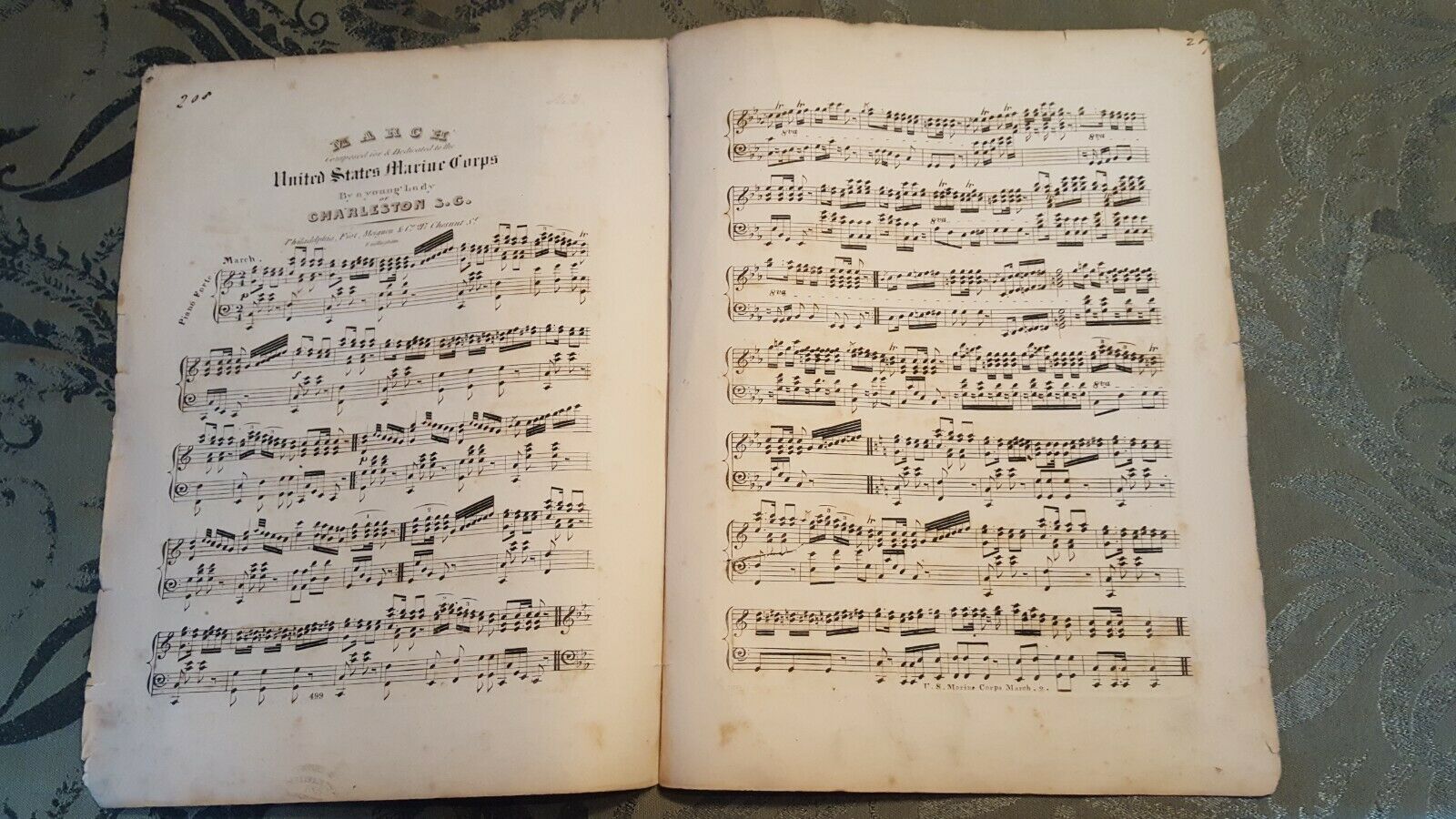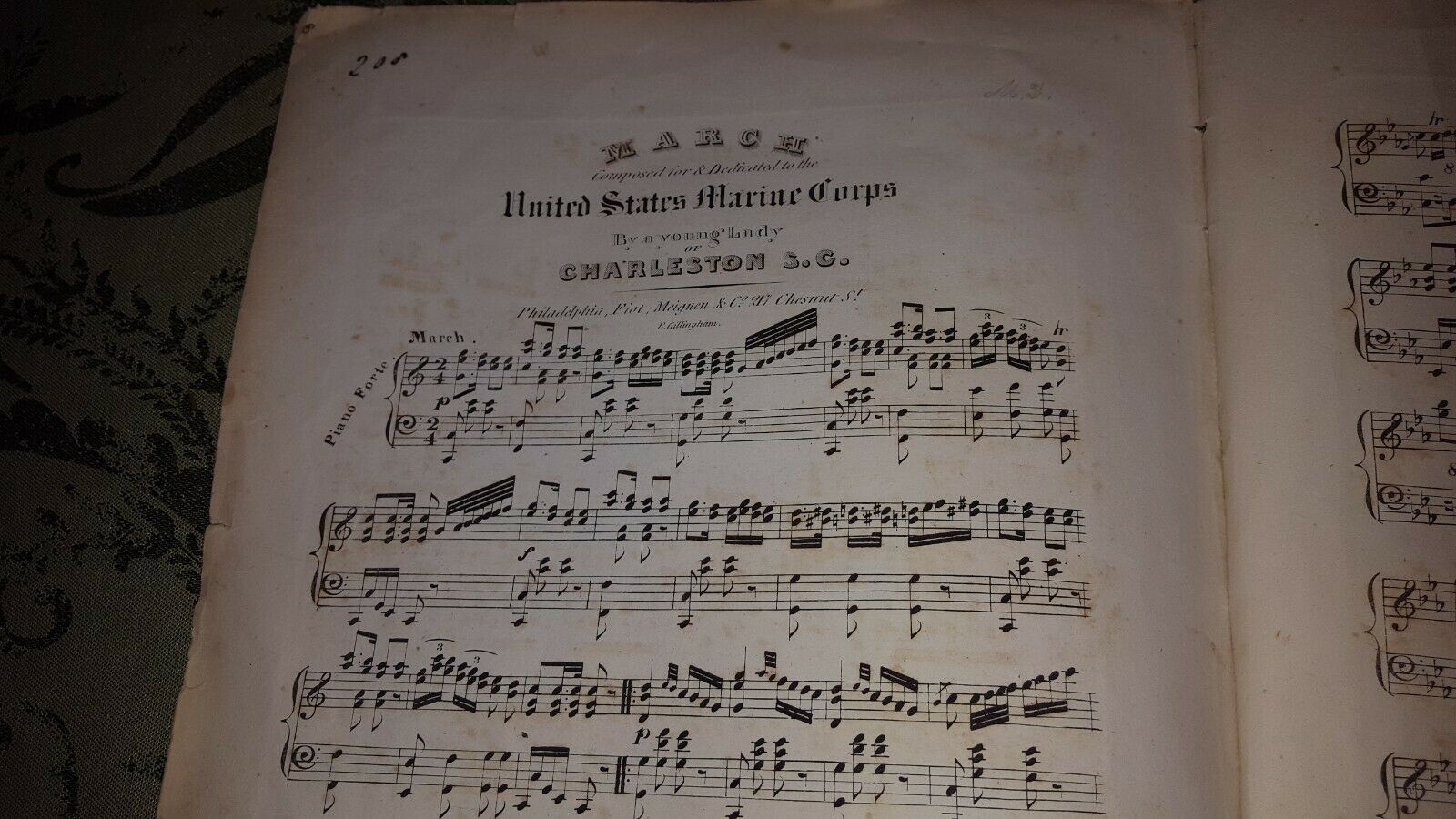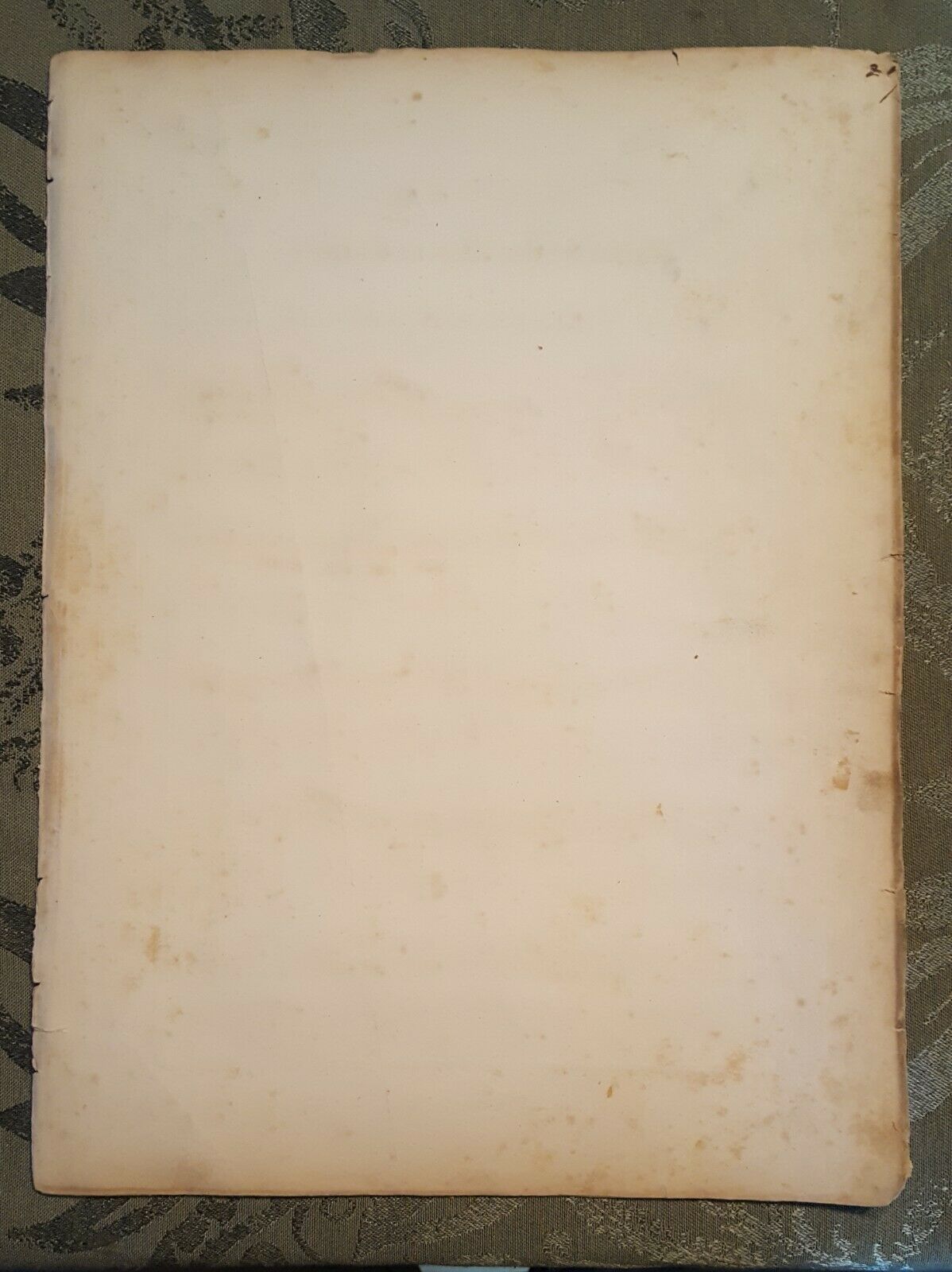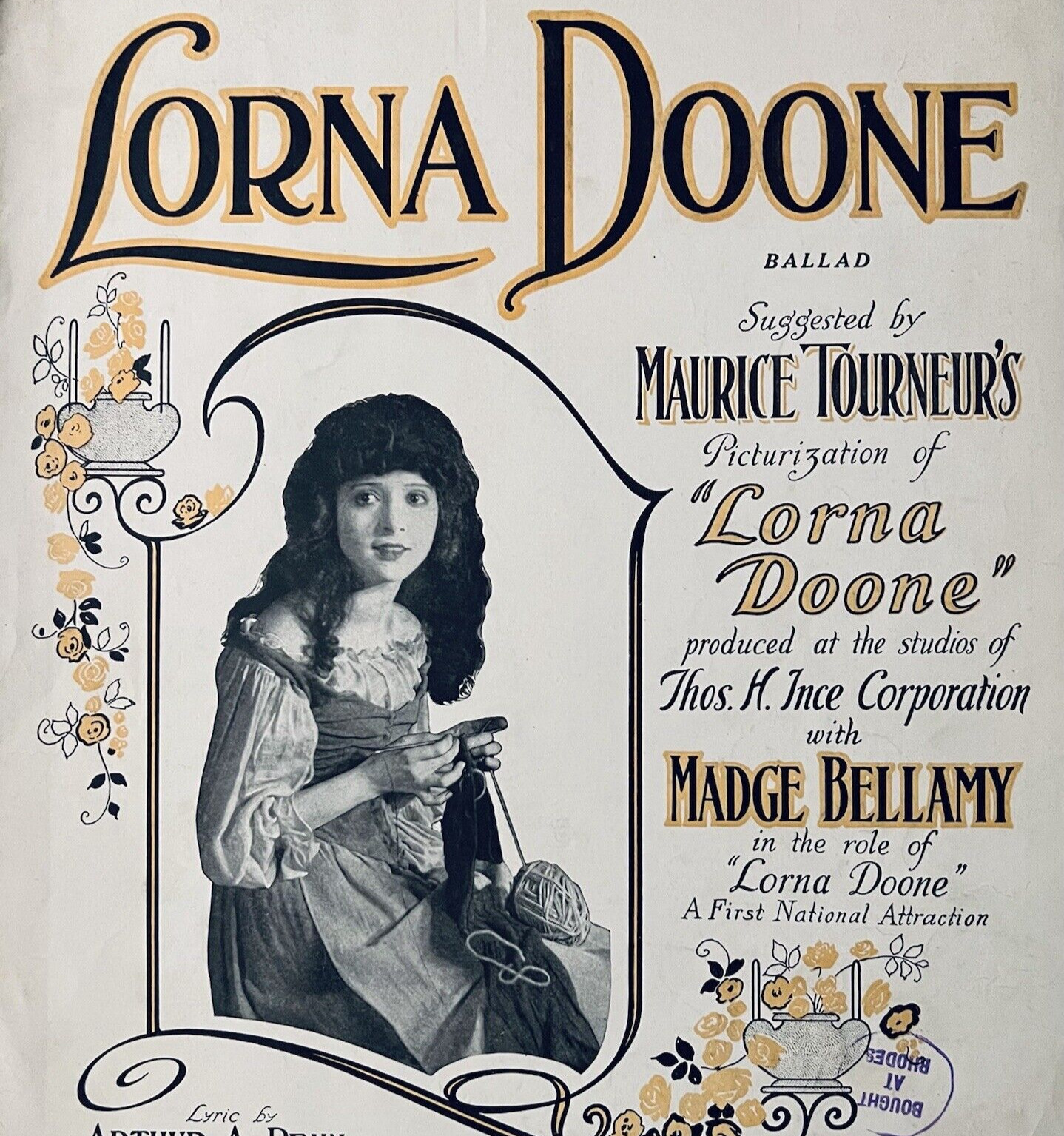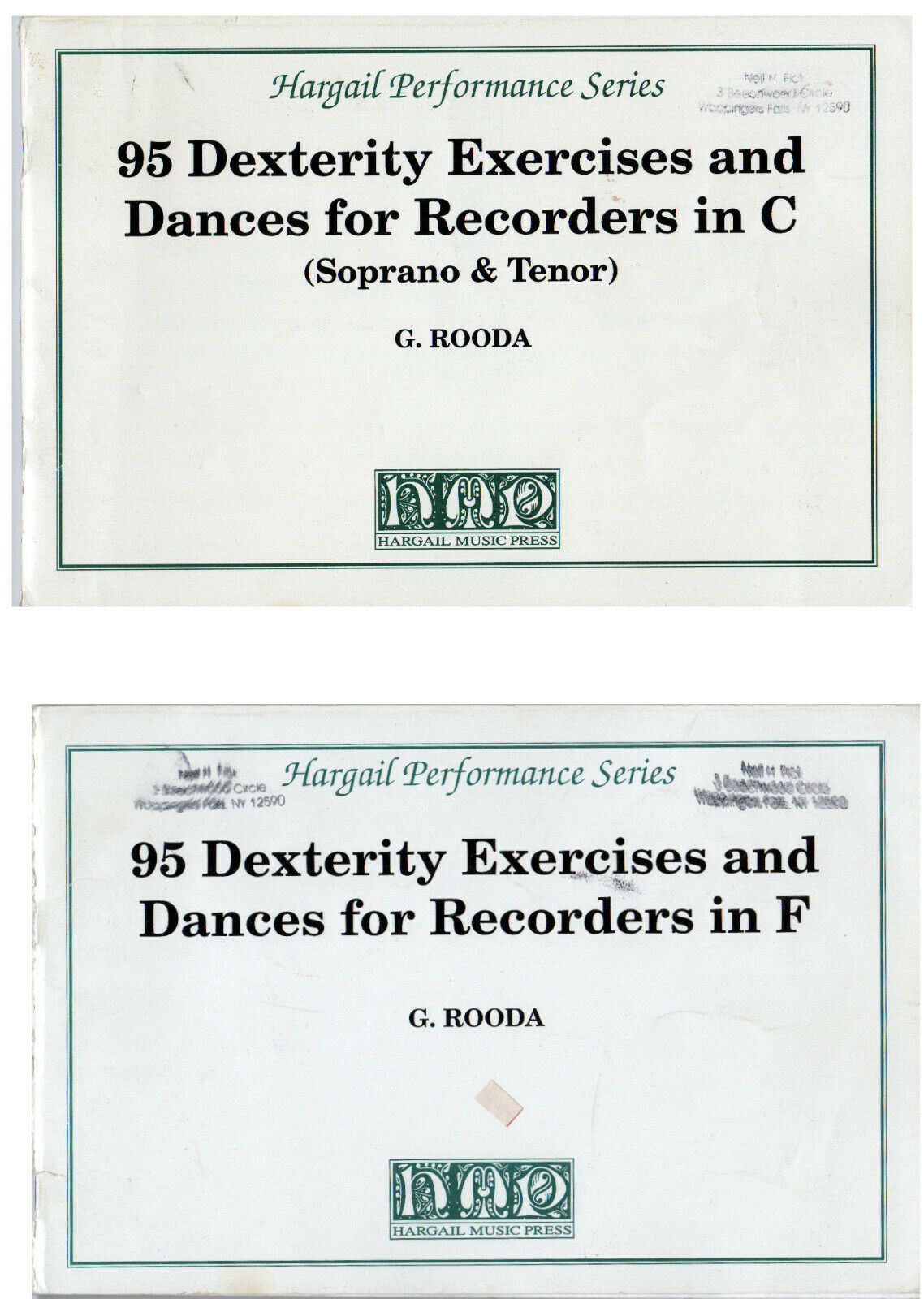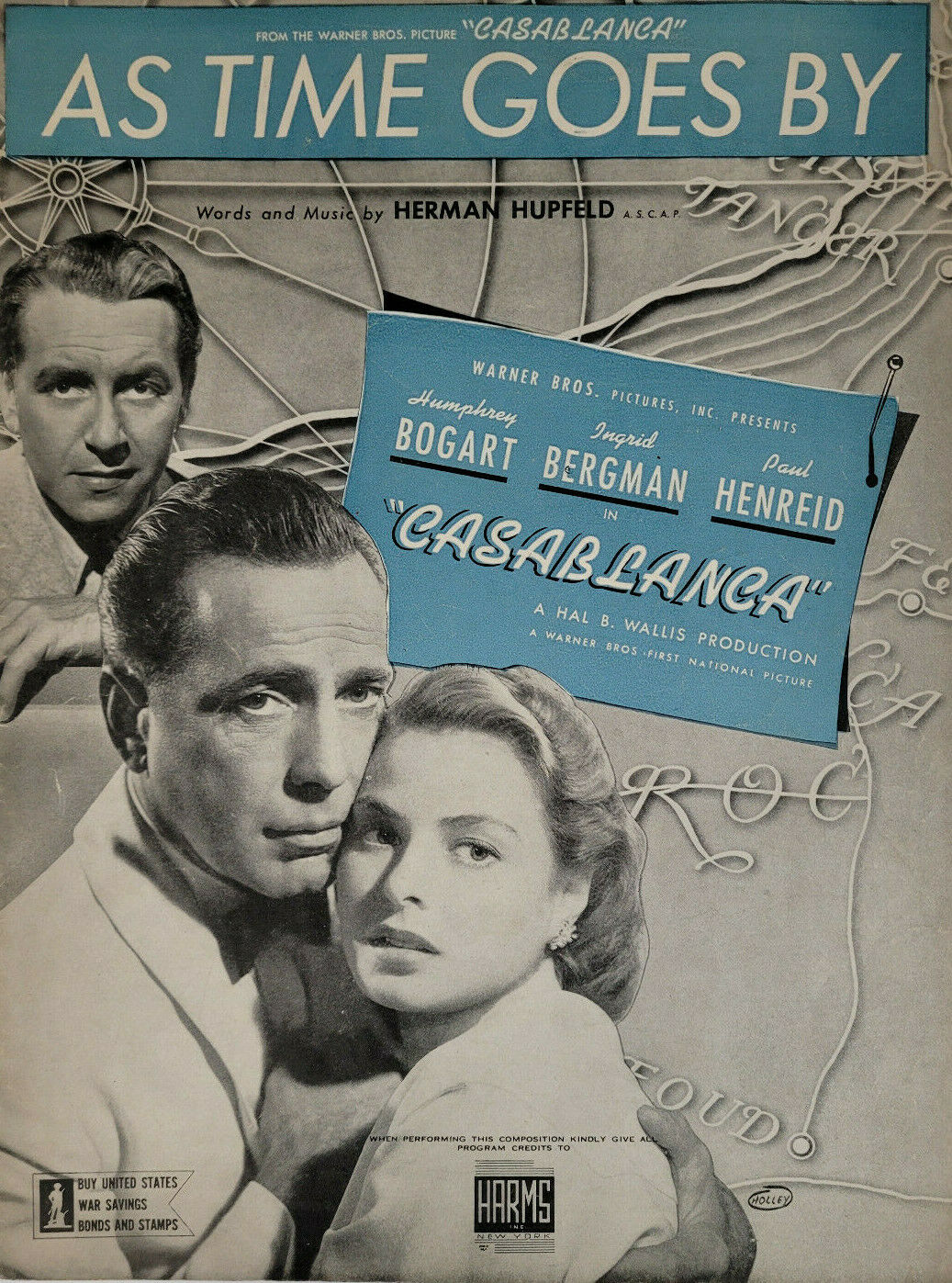-40%
War of 1812 US Marines March Sheet Music 1st Female Composer South Carolina
$ 11.61
- Description
- Size Guide
Description
A Lady of Charleston [South Carolina]; [Eliza Crawley Murden (1784–1847?)].March Composed & Dedicated to The United States Marine Corps, by A Lady of Charleston.
Philadelphia: Fiot, Meignen & Co.,.
[1827].4 pgs, small folio.1st Philadelphia Edition.
“Lady of Charleston” Eliza Crawley Murden’s
March Composed & Dedicated to The United States Marine Corps
was first published by G.E. Blake in 1814–1815 [Wolfe 6360]. It has been described as being likely the first published composition of sheet music by a Southern woman [see Bailey below]. The occasion of this composition’s origin was the heroic part the Marines played in the final major battle of the War of 1812, the Battle of New Orleans on January 8, 1815. In 2010, author Candace Bailey provided an incorrect publisher attribution for the first edition (John Cole’s Baltimore edition was c.1825), however, her observations upon the composition itself are notable:
The first publication of a southern woman’s music appears to have been printed in Baltimore when John Cole of No. 123 Market Street published
The United States Marine March
, composed by a “Lady of Charleston, South Carolina” around 1814 or 1815. This work initiates a trend, for the extant data clearly shows that Baltimore became somewhat of a publishing haven for women composers—almost completely unnamed, of course. In 1977, Bunker Haven identified the composer as Eliza Crawley Murden (1784–1847), a Charleston poet. She published a book in 1808 [see Stoddard & Whitesell 871] whose title page reads “Poems by a Young Lady of Charleston” ... [The composition]...is a piano solo in C major that consists of militaristic dotted rhythms and octave flourishes in the right hand. A key change to C minor/E-flat major in the B section and a dew ornaments round out the technical requirements of the composition. The fistfuls of chords may see, unladylike to the modern observer, but considering the “pianoforte” of the early nineteenth century, the texture becomes less overtly masculine (pp140–141).
